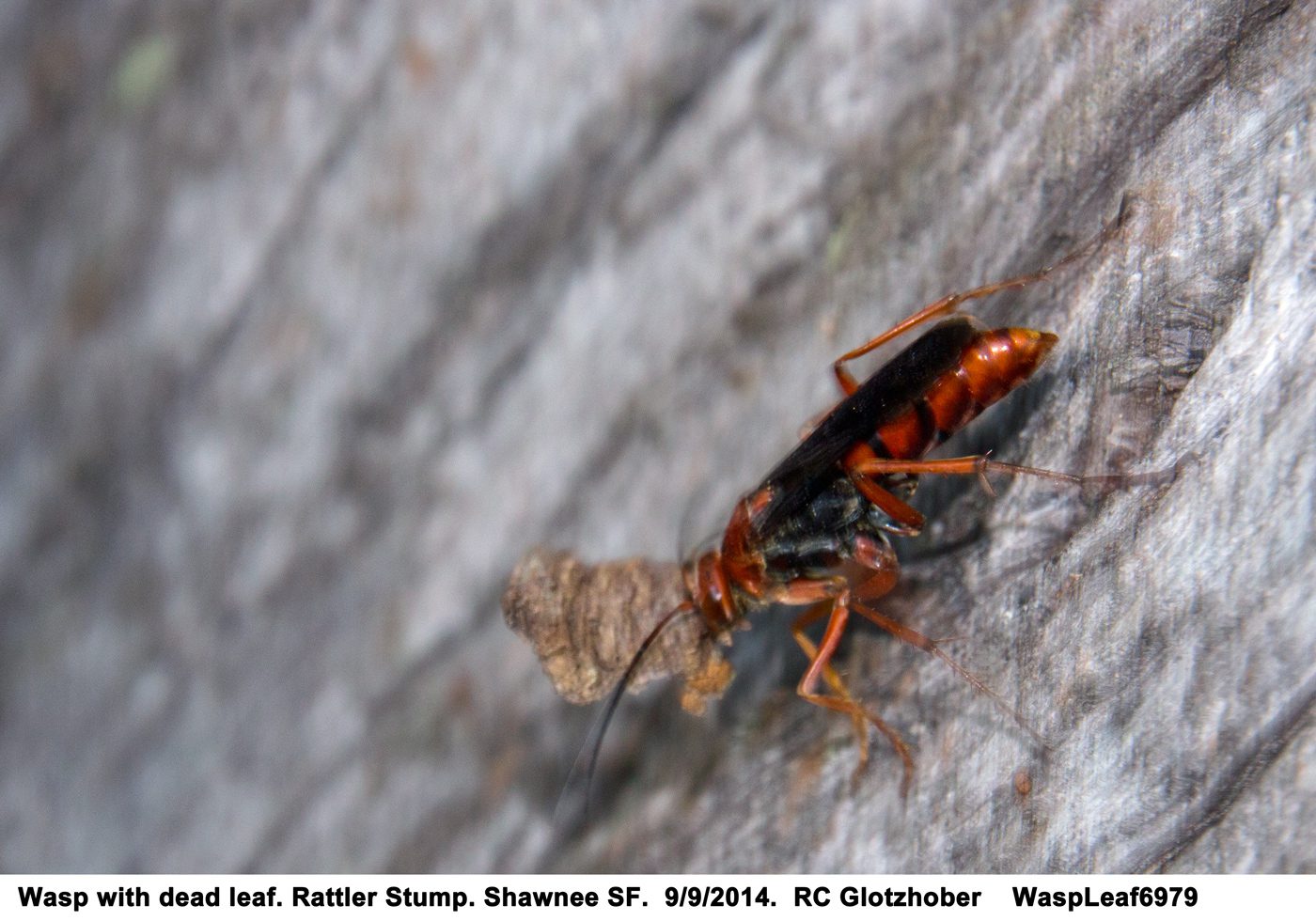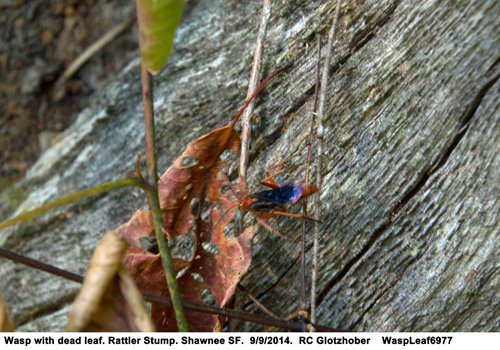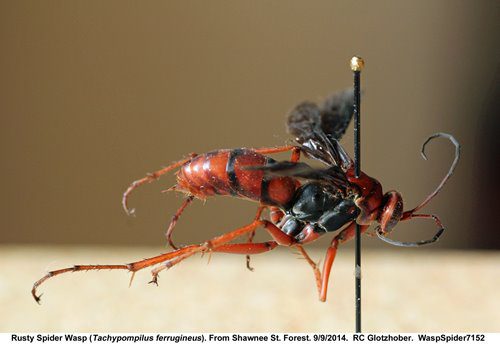Welcome to Our Summer Interns!
Meet Grayson and Grace—two of our outstanding summer interns at the Ohio History Connection!
Last week I posted a blog about finding five baby Timber Rattlesnakes inside a rotting stump in Shawnee State Forest in southern Ohio back on September 9, 2014. I made very brief mention in that blog about an interesting wasp, with interesting behavior, that was using the very same stump! Here follows what information I have from field observations and from various searches.

The wasp was about 7/8” long, mainly a dark reddish color, with the rear half of its thorax black, and four narrow black bands circling its red abdomen. The wings were a purplish black, and it hind legs were especially long.
We were led to the stump by signals from the telemetry transmitter implanted in the female rattlesnake. At first, we thought there was no snake present. A glance at the hole in the top showed it to be small – perhaps too small for the large female. At any rate, we were still confused about where the rattler could be. That is when the wasp caught our attention and we started watching it. Had it not been for the wasp, we just might have moved further away – at least until the telemetry signal brought us right back to the stump. It was only after watching the wasp briefly that Doug realized the signal was “hot” above the stump, and dropped off sharply as the receiver was moved away from the stump. Then we looked more closely at the small hole on top of the stump and noted the baby rattlers – which I discussed in my September 23rd blog.

Before noting the baby rattlers, and after we had spent 20 minutes or so photographing them and examining the situation, we watched the wasp with interest. Several times it struggled, walking backwards, dragging a dead leaf, or a partial green leaf, up onto the stump. Often the wasp would lose control and drop the leaf, and quickly start over again. When successful, it dragged the leaf into a cavity or crevice in the stump. It did this in more than one cavity – though how many different such cavities or crevices we did not ascertain. All the while, it mostly ignored us – even though we were at time only 6 to 12 inches away from it with camera. Why was it dragging these leaves and some small twigs or pieces of bark into the rotting stump? We had no clue. After watching it for a while, I decided to capture it inside an empty film canister. (I always have at least 2 or 3 of these in my pack or camera bag – even though I’ve not shot film for 8 years. They are handy containers for lots of interesting finds!)

Back in Columbus, it was not too hard to identify the wasp. The long antennae and long hind legs plus the wing venation quickly led to the family of wasps known as the Pompilidae, or spider wasps. As luck would have it, the natural history collections of the Ohio History Connection have one such specimen already in its holdings – so direct comparison of a known specimen confirmed its identification. The wasp is the Rusty Spider Wasp, also known as the Red-tailed Spider Wasp, Tachypompilus ferrugineus. The genus name is derived from tachy which means swift or rapid and the family name of spider wasps. The species name refers to the rusty red color, similar to iron rust. So the name means the rusty red, rapid spider wasp.
As it turned out, a web search on the species found lots of references, but not a lot of behavioral information. It is considered a solitary wasp – the females not nesting in colonies like hornets, but nesting alone. Apparently, at least some of their prey are large wolf spiders and fishing spiders, and I found a photo online of one of these wasps dragging such a spider – reproduced here from Wikipedia.
All the spider wasps sting and paralyze spiders, which they drag live to their nests, and then lay one or more eggs on the spider. When the egg hatches, the larval wasps eat the paralyzed spider before molting into an adult spider wasp. This behavior somewhat mimics wasps in a different family known as Mud Dauber Wasps. One common mud dauber, known as Organ Pipe Wasp, builds a series of mud pipe-like structures attached to buildings. Each “pipe” contains a series of cells with a single spider on which a single egg was laid. Most people have seen the mud nests of these wasps. As mentioned, the mud daubers are in a different family and only somewhat similar in behavior and ecology to the spider wasps.
None of the references I could find detailed why a spider wasp might drag leaves into a cavity. Are these a form of insulation, to keep the spider and the egg or larvae warm until next spring? Do they serve some other purpose? Or is it just aberrant behavior of a wasp that has already produced several litters of eggs, and is acting out a drama without the normal spider prey involved? If any of my readers have access to an answer to this – let us know!
Oh! One more thing. Several of the references repeat the statement found in Borror & White’s Peterson’s Field Guide to the Insects, that “Spider wasps inflict a very painful sting.” It’s probably good that I had not read that before trying to trap this specimen in a film canister!
This specimen will soon be added to the OHC natural history collections – and details of our observations will be added to a file folder for the specimen – along with a copy of this blog.
Bob Glotzhober
Curator Emeritus of Natural History